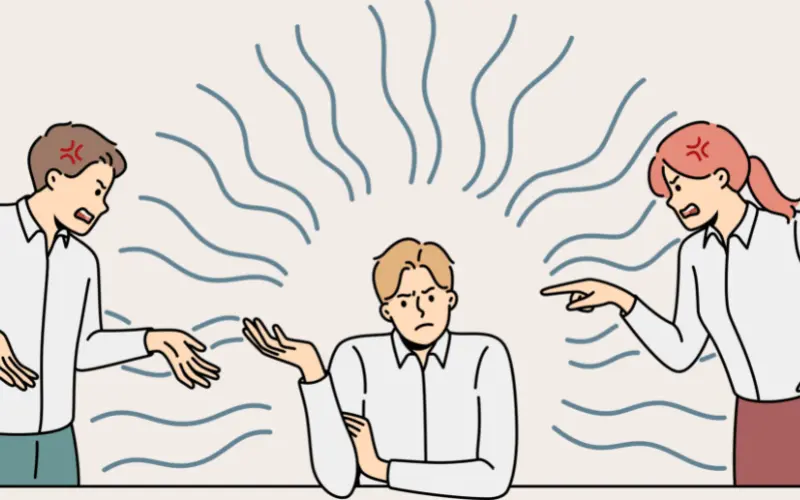Nearly everyone seems to be out of the “normal” range these days. Have you ever pondered whether or not your partner is a narcissist? How can you tell if your partner is a narcissist?
Thanks to a plethora of internet publications and articles describing narcissism, gaslighting, and a variety of other relationship and personality patterns, we are now familiar with narcissistic relationship patterns.
We need to go into more detail about the typical narcissistic relationship pattern to assist you in determining whether this is your reality.
5 Most Common Narcissistic Relationship Patterns
Narcissists might use various patterns when dictating and controlling their relationships. Depending on their status, these patterns may result from intentional or unintended behavior.
Despite their differences, the patterns of relationships are likely to be founded on abuse and manipulation. Long-term commitment to a narcissist is never simple.
A romantic relationship may exhibit numerous narcissistic relationship patterns. You may have encountered one or more of these circumstances in your current or prior relationships.
Let’s understand some common narcissistic relationship patterns in the below points:
1. The Boring Narcissist

One of them concerns two people who had an excellent relationship and fell so deeply in love that they started talking about getting married.
However, narcissists are prepared to leave when they become bored with their spouse.
This narcissistic relationship pattern might absolve him of responsibility by arguing that his girlfriend wasn’t who he believed she was.
He is done because he has decided nothing is left to gain from the relationship, leaving his partner bewildered and hurt.
2. The Recycler Narcissist
Recycling partners is another typical narcissistic relationship pattern.
Although they are devoted to their relationships, they are prone to getting bored and switching to the next person on their rotation. In this pattern, relationships with narcissists never feel lasting or secure.
The narcissist has amassed a group of dependable partners over time who are always ready to take them back.
Because they lose affection for their spouse if they are injured or offended in any manner, these narcissists tend to leave relationships quickly.
Instead of attempting to resolve the situation, they move on to another person they perceive as secure.
3. The narcissist who seeks novelty
Novelty-seeking narcissists are only in it for the thrill of the chase, and once he has them hooked, they won’t be able to resist him for long. Unexpectedly, he will depart in search of a new target.
They enjoy the excitement of the quest but need more than the actual connection. You’ll experience ten minutes of being his queen and the woman he’s been after all his life. However, as soon as you exhibit evidence that he has won you, he starts to back away.
4. The Narcissist With A Grudge
The people who retain grudges come last. Even if they can’t recall the reason, they have a long list of ex-lovers they now loathe and avoid communicating with.
The narcissist remembers that they want the other person to suffer, which is what they believe is happening in their absence, but the specifics of the hatred are hazy.
It is challenging to be in a relationship with a narcissist. Let’s examine some options for action should this circumstance arise.
5. The Narcissistic Love Bomber
This is the kind of guy that spoils you with presents, devotion, flowers, praises, and expensive dates. Dreamy, isn’t it? It’s when you discover that all of this admiration and attention is a ruse.
When a narcissist loves bombs you, he overwhelms you with attention and affection before letting you know that he believes you owe him money. Now that he has taken care of all of these things for you, you must follow suit.
The Six Phases of the Typical Narcissistic Relationship Pattern
The stages we discuss can occasionally occur in a different order, but for the most part, they’ll proceed similarly.
1. The charm offensive
You will likely be made to feel like the unique person in the world at this time. This game’s stage is the most compelling.
Nothing else matters when you’re having a great time and someone is focusing on you and making you feel like the center of the world. What’s wrong? That is their goal.
You are less inclined to quit at this stage of the narcissistic relationship pattern.
Why? Because whenever you consider leaving, they will force you to return to this area. When times are rough, they’ll start acting this way once more and remind you of their charm offensive. It is strong and highly manipulating.
Additionally, there’s a good chance they’ll open up to you about something or try to make you feel bad for them. Once more, this is a technique for controlling your future reactions by exploiting your emotions.
2. The sly insults start
A lack of self-assurance lies at the core of every narcissist. A narcissist must constantly be the greatest and own the finest.
Furthermore, despite their outward appearance of extreme confidence, they fear you will leave.
You’re more likely to grow dependent on them for the positive feeling their charm gives you the more they put you down and then continue to enchant you.
You might feel depressed when someone makes negative remarks about you. They quickly follow it up with praises and behave like the cutest person ever, making you feel better immediately.
This intoxicating adrenaline spike from their suffering and relief keeps you glued to their side. Additionally, it makes you long for their appeal, and you start to try your hardest to please them.
3. Gradually cutting you off from friends and family
Slow detachment from your closest relationships is the next phase of the narcissistic relationship pattern.
When you’re completely taken in by a narcissist, you’re likely to disregard or fail to see the warning signs.
Because it eliminates your support network, this is one of the crucial stages of the narcissistic relationship cycle.
After that, all you have is the narcissist to turn to for support. They do desire that.
The issue is that your loved ones will be able to see them quite clearly and try to warn you away.
Sadly, because you are so entirely dependent on your narcissist, there is nothing you can do about it right now.
The narcissist will be terrified that you will depart due to the warnings from your loved ones at the same time.
They will gradually begin to attempt to drive you away from these people using a variety of various approaches since they don’t want you to be associated with them.
By the end of the narcissistic relationship cycle, it’s not uncommon for a victim of narcissistic abuse to spend virtually little time with friends and family.
4. A few indications start to appear.
You will eventually recognize a few warning signs for yourself during the narcissistic relationship pattern.
The insults and attempts at gaslighting to make you doubt yourself that you previously dismissed have now made sense. You become aware that something is off.
At this time, you might start to pull back, start going out on your own, begin seeing friends more, or start taking care of yourself.
Your narcissistic buddy or lover will become alarmed when they see this. Then you’ll notice that they resume their offensive charm to remind you why you first started seeing them.
This will likely be sufficient to jog your memory of the good days, leading you to decide to stay.
5. They begin to back away, and you need to figure out where you stand.
When your narcissist is confident they have you ultimately in their grasp and exactly where they want you, they will begin to distance themselves. The first thing they might do is act passive-aggressively or stop calling you for a few days.
You won’t understand why they’ve suddenly stopped talking to you, and it will affect you more severely than you might think. Because of their narcissism, you have developed a strong dependence on them, which was their goal all along. They desired ultimate dominance over you.
6. They finally leave, or you do.
The narcissistic relationship pattern ends when either you or your narcissist walks away. We’re sorry to announce that there isn’t much hope for a happy conclusion here.
Nobody should strive to continue a relationship that gives them emotional suffering and agony because no one deserves it.
As long as they can use you, the narcissist is less inclined to leave, and it’s usually the victim who learns to go after a brutal struggle.
However, pulling away from this kind of relationship requires a lot of courage and strength. The catch is that you have to follow through on your decision once you’ve made it. They might try their charm offensive again, but ignore them!
You could read some tips to deal with a narcissist if you are dating one and want to move on.
Conclusion
There are subtle harmful patterns of conduct in narcissistic relationships, and then there are other moments when blaring warning indicators emerge.
It’s vital to watch out for warning signals if you think your relationship with a narcissist is beginning to affect your sense of self negatively.
You recognize warning signs if your partner is violent, ignores you, acts as though you’re insane, or manipulates you always to get what they want. Internal healing begins first.
By investing in yourself, you can develop the confidence to overcome the sabotage that permeates your relationship.











